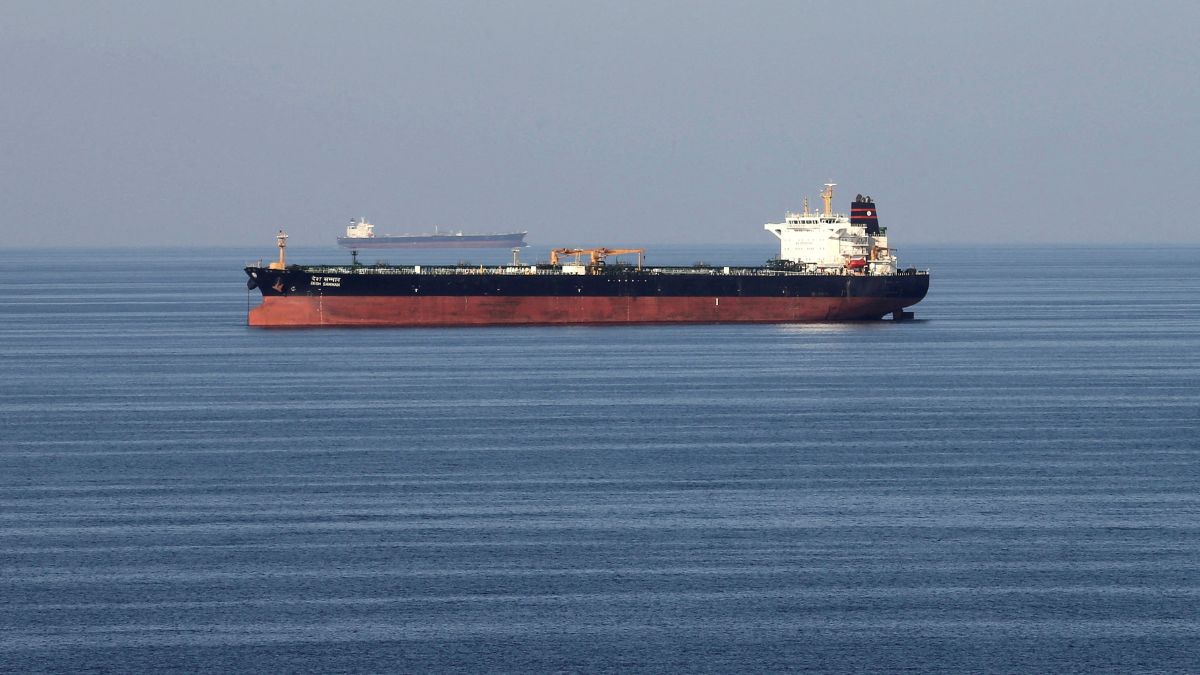Choking fears surge in Hormuz Strait as tankers collide
 Oil tankers pass through the Strait of Hormuz | Reuters
Oil tankers pass through the Strait of Hormuz | Reuters
It is the stuff of nightmares for the global oil trade and the world economy as nothing hurts more than oil prices. And it is about the ace up the sleeve that Iran has in the Hormuz Strait where it can score big in the ongoing conflict with Israel.
The Hormuz Strait lies between Oman and Iran. The shipping line is just 3 km wide in either direction while the narrowest point of the Strait is 33 km wide.
But the sea is very shallow with an average depth of 50 metres with the deepest depth at about 90 metres. Therefore, all Iran has to do is to choke off the Hormuz Strait, which is not a difficult proposition—just sinking a few ships and oil tankers with missile or drone attacks in the narrow strait can easily do the job. A few ‘accidents’ can also help.
On Tuesday, two oil tankers—the India-flagged ‘Adalynn’ and the ‘Front Eagle’ collided in the narrow strait and caught fire. The ‘Front Eagle’ was carrying 2 million barrels of Iraqi crude oil to Zhoushan in China.
Incidentally, this week, the US-led Combined Maritime Force had reported electronic interference from the Iranian port of Bandar Abbas, located just north of the Strait.
But of course, the US will be keeping watch. The entire Bahrain-headquartered 5th fleet of the US Navy’s Central Command is mandated with the protection of these shipping routes in the region and to ensure free passage in the three chokepoints at the Strait of Hormuz, the Suez Canal and the Bab al Mandeb Strait.
About 21% of crude oil, condensate and fuels from Iran, Saudi Arabia, Kuwait, the United Arab Emirates, and Iraq move through this strait in huge tankers primarily meant for the markets of Asia. Some countries like Qatar—the world’s second biggest exporter of liquefied natural gas after the US—use only the Hormuz Strait for its gas exports.
Blocking off this passage would result in global oil and energy shortage leading to a big rise in oil prices across the world.
Among other countries, it will also hit the US as the cost of oil that the US mainly imports from Canada, Mexico, Brazil and also from Saudi Arabia and Iraq will spike thereby increasing costs for the US.
Though the US is the world’s biggest producer of oil, its domestic production doesn’t meet its entire energy requirements and therefore has to import.
While war-hit Iran may obviously be mulling the option of blocking the Hormuz Strait, it may want to undertake a cost-benefit analysis of such a move, but possibly as among the last options.
Middle East